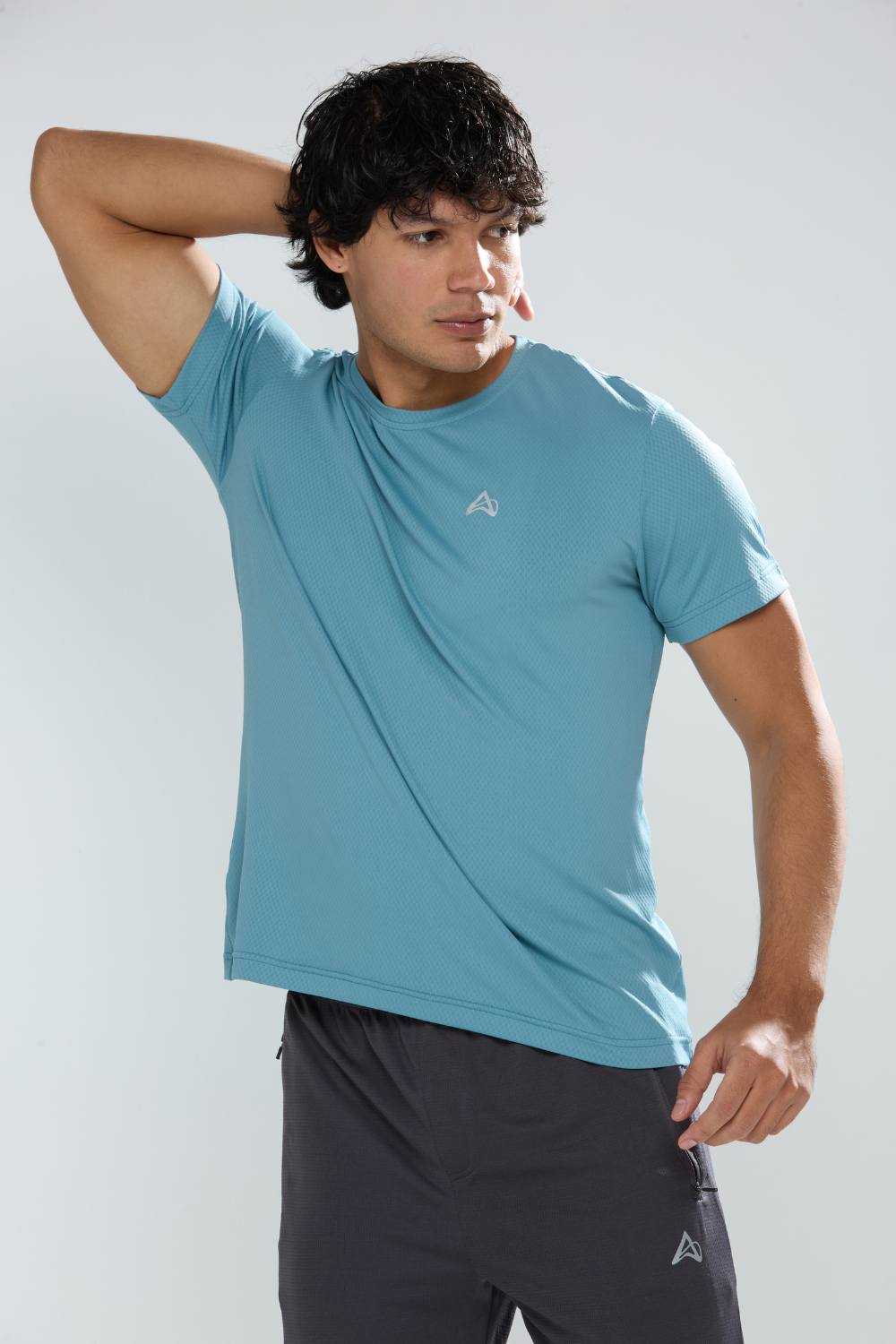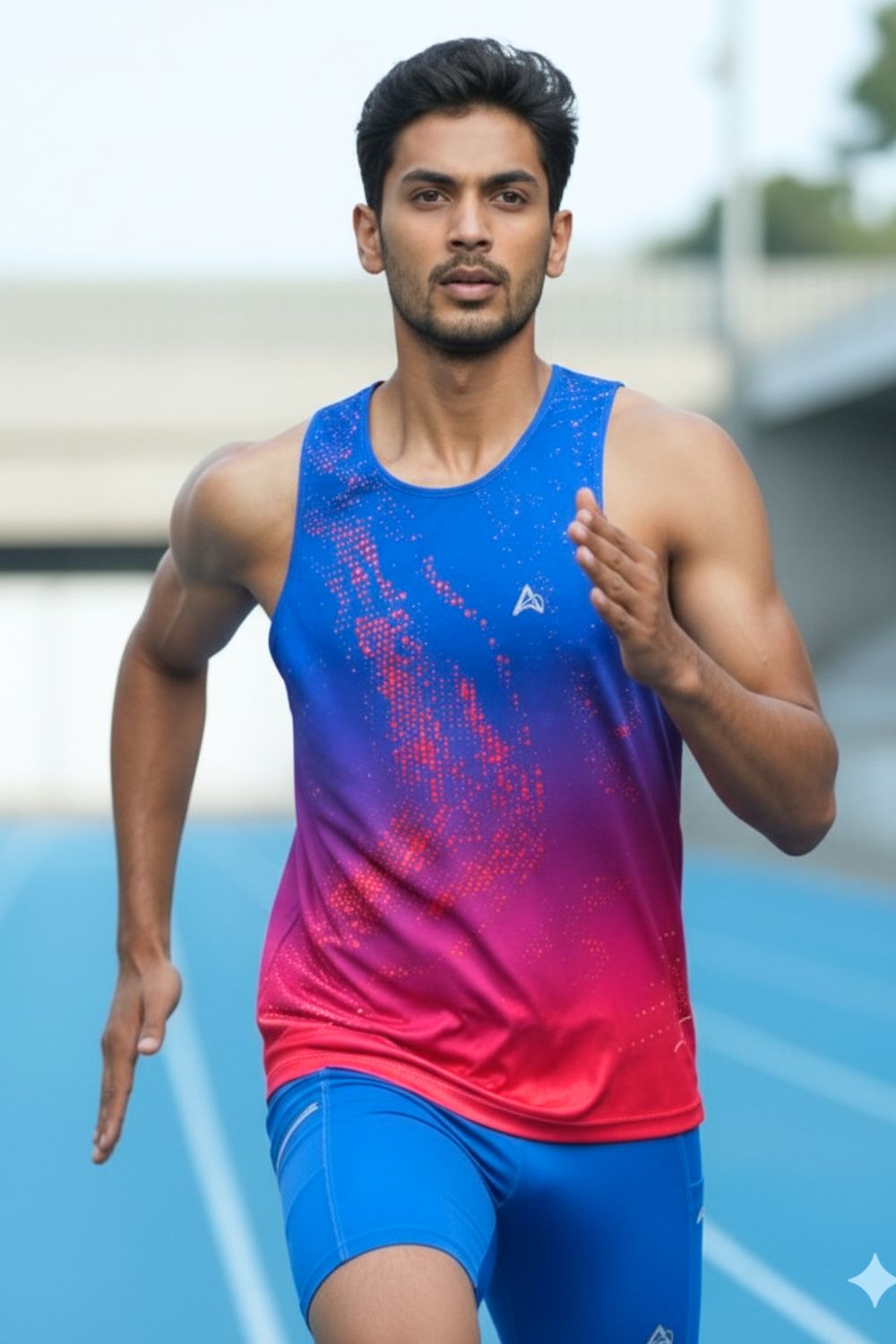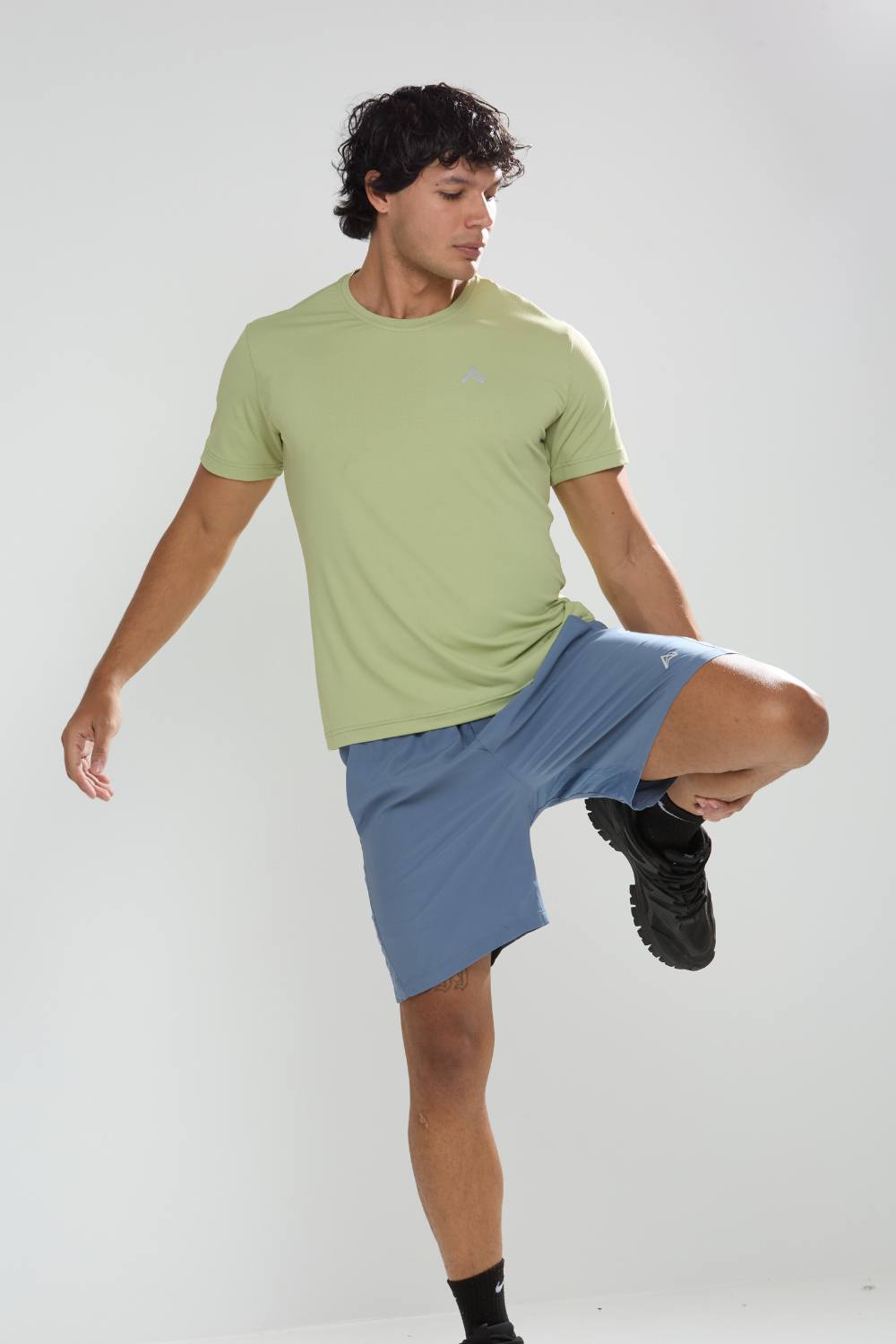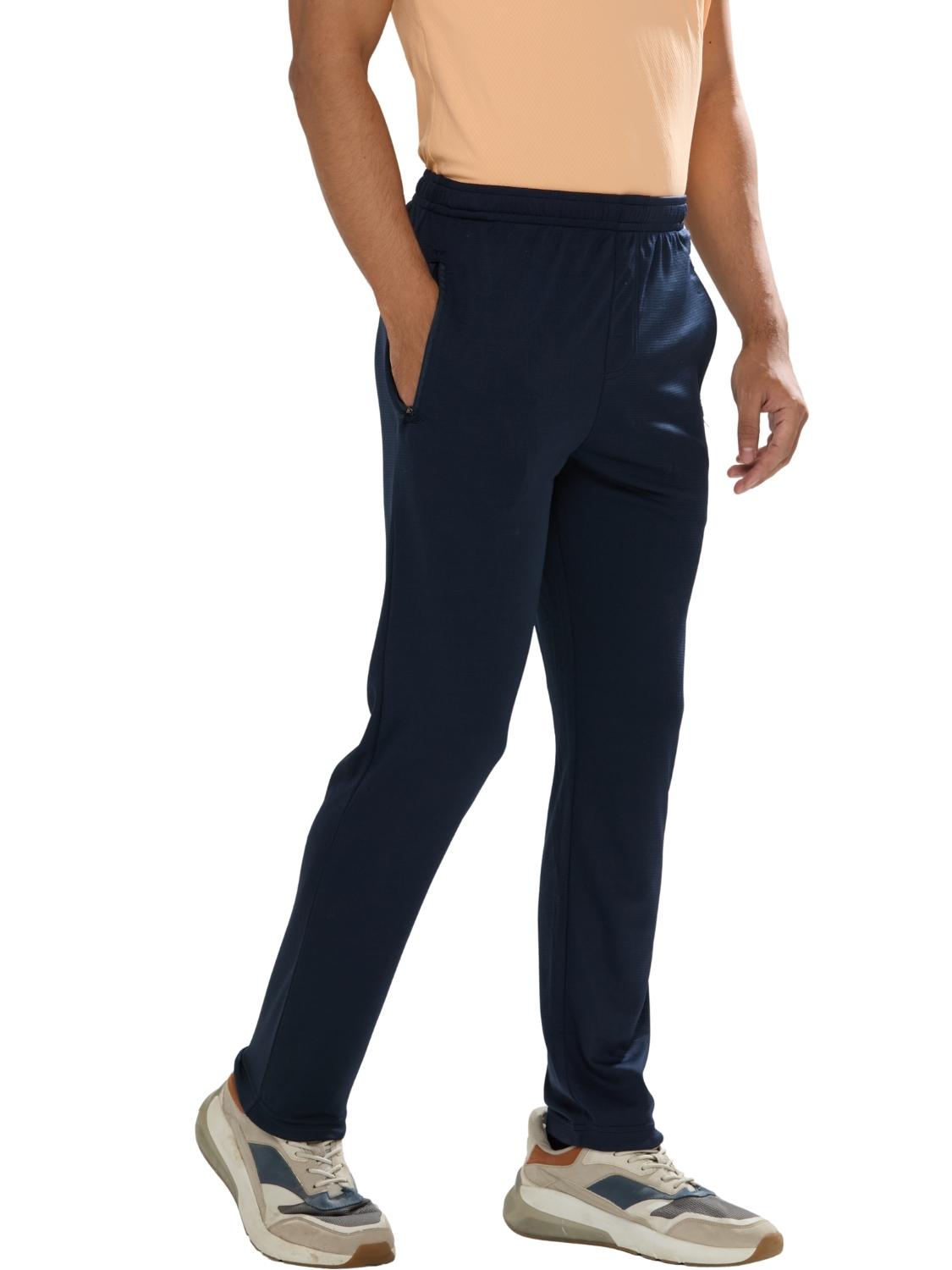Picture this: You're tying your running shoes on a humid Mumbai dawn, the atmosphere heavy with moisture and the roads alive with morning hustle. As you start your jog, your attire can either support you drawing away perspiration, allowing easy movement or hinder you, rubbing uncomfortably and adding unnecessary burden. For runners across India, this goes beyond style; it's about enduring in an environment where international sportswear leaders frequently miss the mark. Yet, a transformation is emerging, with worldwide advancements adjusting to align with the raw demands of regional conditions.
Tired of gear that slows you down? Chafing, soggy fabrics, and missing pockets kill your run's momentum. At Aguante, we're runners who get it. Our high-performance activewear features moisture-wicking fabrics, ergonomic designs, and smart storage to keep you focused. Shop Now!
Global Sportswear Trends Adapt to India's Local Demands
In the expansive realm of athletic apparel, the push for designs that prioritize performance is harmonizing cutting-edge worldwide developments with the everyday challenges faced by Indian athletes and joggers. The global sportswear market reached an impressive USD 335.92 billion in 2023 and is forecasted to expand to USD 646.01 billion by 2030, advancing at a compound annual growth rate of 9.9% from 2024 onward. India's fitness surge stands out prominently amid this growth. Cities such as Bangalore, Hyderabad, Mumbai, Pune, Navi Mumbai, Delhi, Gurugram, Surat, and Ahmedabad buzz with joggers, cyclists, and fitness devotees, propelled by public health initiatives and an expanding middle class eager for healthier routines.
This momentum extends beyond borders. In the Asia Pacific, recognized as the most rapidly expanding area for sportswear, projections indicate a CAGR of 10.5% through 2030. Nations like India are experiencing heightened involvement in sports and wellness pursuits. The proliferation of smartphones and enhanced online connectivity has elevated e-commerce, rendering premium athletic equipment more accessible. Still, as athletes navigate pitted roads in Delhi's arid paths or contend with seaside gusts in Mumbai, a critical inquiry persists: Can international sportswear genuinely accommodate the Indian pace?
Emerging Global Trends in Activewear
Worldwide, the athletic clothing landscape is transforming swiftly, influenced by heightened health focus, technological ingenuity, and evolving daily habits. Sustainability stands out, with fabrics derived from recycled sources shifting from specialty to standard, attracting buyers who seek environmentally conscious options for their active attire. Technological progress follows closely: Materials that draw moisture, neutralize scents, and manage body heat are elevating clothing to intelligent workout aids.
Inclusivity plays a pivotal role too. Companies are abandoning uniform sizing approaches, introducing varied dimensions and designs tailored for different genders to suit authentic physiques. The women's athletic wear sector, for example, anticipates a CAGR of 10.2% until 2030, underscoring a wider drive for empowerment in sports and leisure. Athleisure remains prominent the fusion of gym wear into casual outfits, amplified by influencers and famous endorsements.
These developments also merge simplicity with functionality. Clean designs conceal useful elements like stable compartments and visibility-enhancing accents, enabling sportspeople to concentrate on their activity without adjustments. Globally, the men's segment has traditionally led the market, though growing female participation is reshaping dynamics. Footwear remains the dominant category, followed by apparel, which continues to expand steadily. E-commerce channels are accelerating, underscoring digital platforms as increasingly vital for reaching consumers and driving growth.
However, the challenge lies here: Originating in distant executive suites, away from India's rainy seasons, these patterns often require modifications to succeed locally. As detailed in explorations of strategic localization practices, such adaptation transcends mere terminology it's a vital tactic for aligning universal brand essence with regional cultural harmony.
Local Needs Driving Indian Sportswear Design
India's weather presents formidable obstacles. From unpredictable downpours in Bangalore to intense warmth in Ahmedabad, athletes confront conditions necessitating airy, fast-drying textiles. Technologies for moisture management are indispensable, crucial for enduring sessions in dampness that might otherwise render clothing cumbersome and wet.
Utility takes precedence. Local sports enthusiasts require storage solutions that secure devices and essentials without disruptive movement envision firm, vibration-resistant features derived from practical evaluations. Protective inner layers against irritation prove invaluable for prolonged activities on irregular surfaces, where abrasion could transform achievement into discomfort. Sizing must conform to Indian physiques, eschewing Western norms for shapes that provide a bespoke sensation.
Cost-effectiveness completes the equation. International labels often impose steep fees on foreign-sourced items, whereas domestic brands supply superior athletic wear at reasonable rates. This strikes a chord in a marketplace blending worth with ambition. Research indicates that the adaptation process known as localization entails deliberate modifications to digital elements, encompassing linguistic shifts, imagery adjustments, and item synchronization to align with distinct cultural tastes, thereby heightening pertinence and allure. In India, this translates to customizing for equatorial difficulties and city disarray, elevating athletic clothing to an everyday necessity over an extravagance.
Such modifications reflect wider insights in apparel: Geographic adaptations refine online spaces for area-specific dialects and transactions, whereas timing synchronizations correspond with celebrations and weather cycles. For athletic gear, it involves culturally informed alterations such as dimensions for varied forms that cultivate devotion and evade social missteps. Grounded in discussions with fashion leaders, this method underscores localization's function in linking worldwide consistency with indigenous appeal, promoting interaction, diversity, and averting image threats in a linked online world.
Real-World Examples and Case Studies
Aguante emerges as a prime illustration of mastering this integration. Their offerings transcend standard fitness wear; they're engineered for India's warmth, dampness, and rugged routes, emphasizing ventilation and efficacy. They prioritize minutiae: Non-bouncing storage, friction-preventing interiors, sweat-absorbing cloths, light-reflecting elements all validated through genuine athlete trials.
Partnerships enhance genuineness. Via Instagram, connections with trainers such as @barefoot_coach_shanth_koushik, @rajesh84parida, @runholic_dev, @fit_kaur23, and @coach_amitkumar infuse authentic sports perspectives into creation. Envision city jogs amid Gurugram's urban sprawl or Surat's lively avenues these alliances guarantee equipment endures in critical scenarios.
In comparison, powerhouses like Nike or Adidas advance innovative textiles and gadgets, yet frequently neglect India's particulars, such as rain resistance or budget-friendly entry. Investigations reveal that uniformity excels in akin societies but underperforms in developing areas like India, where regional tastes prevail. Aguante reverses this: Indigenous creativity converges with international standards, at costs that remain accessible.
Amid Mumbai's seaside moisture or Pune's undulating paths, their items excel, nurturing groups on Facebook, YouTube, and Instagram. It surpasses mere transactions; it's igniting a fitness revolution. Drawing from executive insights, employing joint ventures in non-Western zones addresses operational hurdles, while showcasing regional appearances in visuals fosters identification tactics adaptable for India's multifaceted populace.
Key Challenges and Risks
Merging international and regional aspects isn't effortless. Advanced substances elevate expenses, conflicting with India's value-oriented mindset. Firms must equilibrium novelty without alienating price-sensitive buyers.
Expanding personalization poses difficulties as well. Varied weather patterns from Delhi's arid cold spells to Hyderabad's sultry heats call for diverse alterations, yet upholding standards during mass output remains challenging. Quick-fashion dangers persist: Ignoring subtleties invites detachment, as observed with entities like H&M or Zara.
Worldwide dominants lead through promotion, despite their products seeming alien. Image hazards escalate absent cultural awareness consider ill-suited promotions that fail. Numerous entities lack adaptation proficiency, viewing it as secondary instead of core. For emerging Indian brands, rivalry demands astute maneuvering, converting obstacles into advantages. Studies stress embedding localization in planning structures for superior intercultural dialogue, diminishing threats in varied settings.
Opportunities and Business Impact
Regional tailoring serves as the key ingredient. Framing as "crafted for India" distinguishes from overseas goods, echoing in a sector desiring pertinence. Outlets like Amazon and Flipkart unlock access, as specialized athletic sites delve deeper.
Society propels expansion. Local fitness groups, digital chatter on Instagram and Facebook, and sports collaborations establish reliability. YouTube presentations illustrate actual application, converting observers to patrons.
Overseas prospects allure. Equipment refined for India's hot zones might dominate comparable areas in Asia-Pacific or Africa, where the region's 10.5% CAGR highlights potential. Mixed approaches universal foundation with area-specific touches amplify participation and diversity. For Aguante, it centers on fair costing and athlete-oriented specifics, demonstrating that homegrown foundations can achieve international reach. As analyses suggest, localization bolsters authenticity and connection in culturally mixed arenas, vital for thriving in places like India.
Expert Outlook
International athletic wear novelty and regional tailoring aren't adversaries they invigorate one another. India, positioned as both a buyer and manufacturing epicenter, is ready for prominence, with growing acclaim for environment-tailored creation.
Entities like Aguante illustrate this synergy: Homegrown ingenuity aligns with worldwide excellence, enabling joggers in Bangalore or Ahmedabad to pursue distances unhindered. The essence? Athletic attire flourishes by echoing both dreams and truths, making each step a declaration of endurance and suitability.
Frequently Asked Questions
How is the global sportswear market adapting to India's unique climate and terrain challenges?
The global sportswear market is increasingly recognizing India's specific needs, with brands developing moisture-wicking, quick-drying fabrics designed for India's humid conditions and unpredictable weather patterns. Local brands like Aguante are leading this adaptation by creating athletic wear engineered specifically for India's heat, humidity, and rugged terrain, featuring anti-chafing interiors, secure storage pockets, and reflective elements. This localization approach addresses gaps left by international brands that often overlook India's tropical challenges and budget-conscious market preferences.
What are the key differences between international sportswear brands and India-focused athletic wear?
International brands like Nike and Adidas focus on advanced materials and technology but often miss India's specific requirements such as monsoon resistance and affordable pricing. India-focused brands prioritize practical features like breathable fabrics for humid conditions, sizing tailored to Indian body types, and anti-chafing protection for varied terrain. The key difference lies in localization Indian brands offer performance-oriented gear at accessible price points while addressing real-world challenges faced by athletes running through Delhi's dusty paths or Mumbai's coastal humidity.
Why is localization important for sportswear success in the Indian market?
Localization in Indian sportswear goes beyond translation it involves strategic adaptation of materials, design, and pricing to match local climate conditions, cultural preferences, and economic factors. Successful localization addresses India's diverse weather patterns (from Bangalore's monsoons to Ahmedabad's intense heat), incorporates sizing for Indian physiques, and maintains cost-effectiveness for the value-conscious market. Research shows that brands practicing effective localization build stronger customer loyalty and avoid cultural missteps, making it essential for competing in India's rapidly growing fitness market.
Disclaimer: The above helpful resources content contains personal opinions and experiences. The information provided is for general knowledge and does not constitute professional advice.
You may also be interested in: Breathable Singlets Redefine Comfort for Indian Runners
Tired of gear that slows you down? Chafing, soggy fabrics, and missing pockets kill your run's momentum. At Aguante, we're runners who get it. Our high-performance activewear features moisture-wicking fabrics, ergonomic designs, and smart storage to keep you focused. Shop Now!
Powered by flareAI.co





































